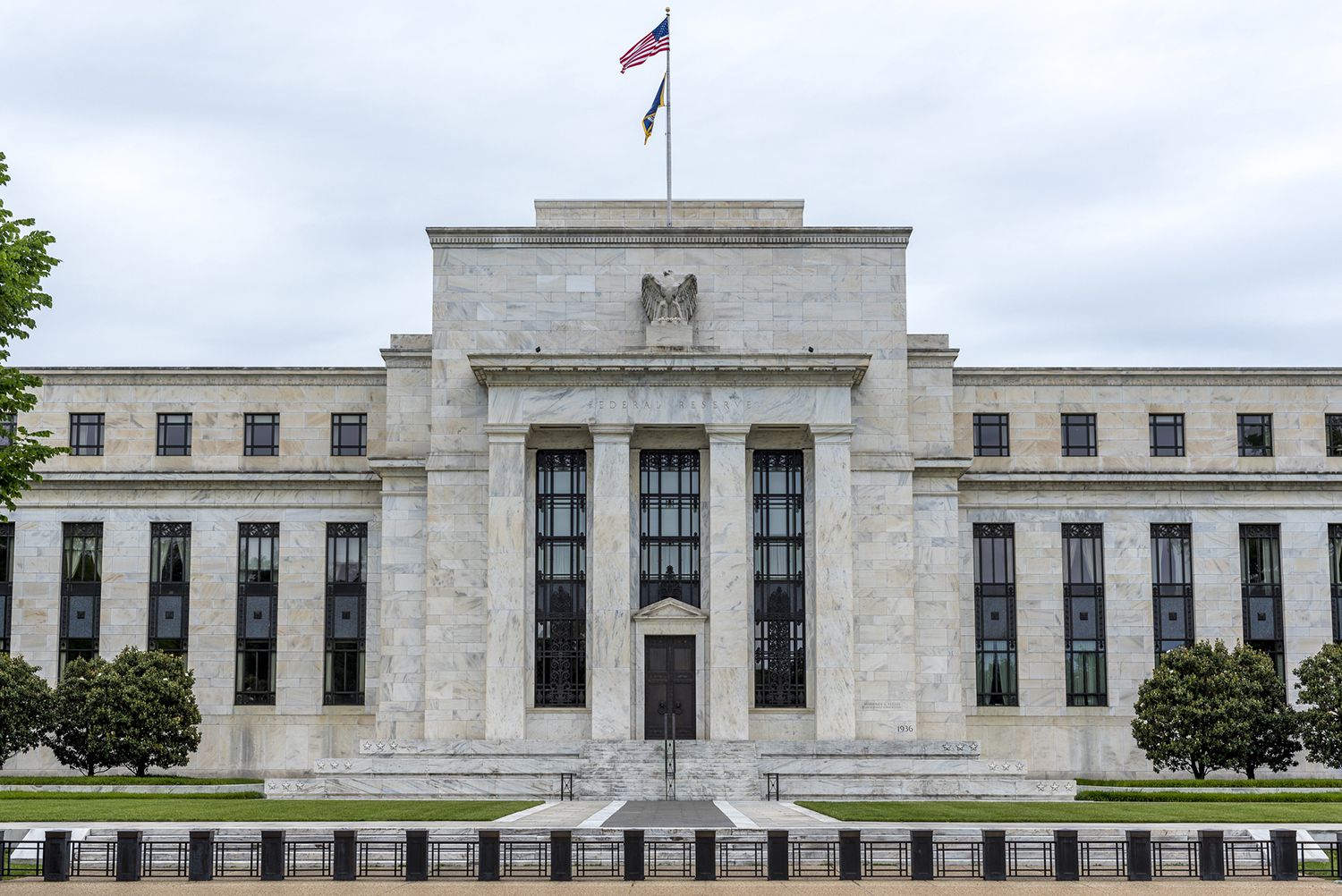A Bird’s Eye View
Monthly Newsletter

Understanding the Complexity of Fed Actions and Long-Term, Fixed Interest Rates for CRE
October 2024
Key Highlights
Commercial real estate financing costs are determined by many factors that combine to make forecasting extremely difficult.
Federal Reserve actions tend to focus on the short end of the interest rate curve, but commercial real estate perm loan borrowing costs are largely driven by long-term rates.
Asset owners tend to study rate movements and anticipate Fed action in advance of a refinance, but owners should take the time to understand all factors at play and the difficulty in using them to predict borrowing costs.
Attempting to Time Financing Events Presents Challenges in a Dynamic Interest Rate Environment
Owners of commercial and storage assets face plenty of challenges in today’s market, including decisions related to financing. Specifically, deciding when to transition from bridge or construction debt into a long-term fixed-rate product, and whether to take on a 5 or 10 year fixed-rate period, is top of mind for many owners. Meanwhile, the industry continues to generate significant discussion and speculation on the future of Federal Reserve actions and financing costs for all product types. One element is largely absent from industry commentary – the fact that long-term financing costs are determined by a series of complex factors, many of which are second order effects to Federal Reserve actions and others unrelated entirely.
Before wading into decisions about which product is best for financing new business plans, undertaking a refinance, or planning for future transactions, owners should take a holistic approach to analyzing financing costs.
Before wading into decisions about which product is best for financing new business plans, undertaking a refinance, or planning for future transactions, owners should take a holistic approach to analyzing financing costs.
An Overview of the Factors that Drive Financing Costs
Much of the industry commentary over the past several months has focused on the Fed’s monetary policy actions that have lowered the Discount Rate, and in turn, lowered financing costs for commercial real estate owners taking on floating-rate bridge and construction debt. Many owners are extrapolating recent events and projecting an extended decline in long-term fixed rates. However, this does not consider the full range of factors that determine all-in, long-term financing costs, and owners who focus solely on widely publicized Fed actions are leaving key factors out of the analysis.
While actions taken by the Federal Reserve Board to lower the Discount Rate are certainly important, they are designed to exert influence over the short end of the rate curve, with only a muted first-order effect on long-term rates. Meanwhile, other Fed actions are designed to influence the long-end of the rate curve, including the buying or selling of long-dated Treasury securities, often 10-year Treasury bonds, and the Quantitative Easing (QE) and Quantitative Tightening (QT) measures that received ample press coverage in the years following the Great Financial Crisis and through the pandemic.
While actions taken by the Federal Reserve Board to lower the Discount Rate are certainly important, they are designed to exert influence over the short end of the rate curve, with only a muted first-order effect on long-term rates. Meanwhile, other Fed actions are designed to influence the long-end of the rate curve, including the buying or selling of long-dated Treasury securities, often 10-year Treasury bonds, and the Quantitative Easing (QE) and Quantitative Tightening (QT) measures that received ample press coverage in the years following the Great Financial Crisis and through the pandemic.
Long-Term Interest Rates are Determined by a Series of Complex Factors
Commercial real estate loans are priced using long-term interest rate benchmarks, such as the ten-year Treasury. This is a key point because long-term interest rates are driven by a variety of factors, mostly outside the immediate influence of the Fed.
The most important factor behind long-term rates in today’s market is the massive pool of outstanding federal government debt obligations stemming from elevated federal spending and leftover pandemic-era stimulus measures. As this debt matures, the federal government is forced to issue new debt to replace maturing obligations because funds are unavailable under current fiscal conditions to pay off these obligations in full.
Given this dynamic, one of the primary concerns of the Treasury is ensuring that new issuances are priced attractively to encourage uptake from buyers. For example, if federal spending continues to run at elevated levels, a growing deficit will need to be funded by new Treasury issuance, and this could play a role in putting upward pressure on long-term rates.
A number of other factors also influence long-term rates, including inflation expectations, the economic growth outlook, foreign demand for long-dated Treasuries, and market sentiment and risk appetite. Sometimes these factors work in tandem to move rates meaningfully, while at other times, they serve as opposing forces that result in subdued rate movements. As a result of this complexity, long-term rate movements are extremely difficult to forecast.
The most important factor behind long-term rates in today’s market is the massive pool of outstanding federal government debt obligations stemming from elevated federal spending and leftover pandemic-era stimulus measures. As this debt matures, the federal government is forced to issue new debt to replace maturing obligations because funds are unavailable under current fiscal conditions to pay off these obligations in full.
Given this dynamic, one of the primary concerns of the Treasury is ensuring that new issuances are priced attractively to encourage uptake from buyers. For example, if federal spending continues to run at elevated levels, a growing deficit will need to be funded by new Treasury issuance, and this could play a role in putting upward pressure on long-term rates.
A number of other factors also influence long-term rates, including inflation expectations, the economic growth outlook, foreign demand for long-dated Treasuries, and market sentiment and risk appetite. Sometimes these factors work in tandem to move rates meaningfully, while at other times, they serve as opposing forces that result in subdued rate movements. As a result of this complexity, long-term rate movements are extremely difficult to forecast.
Understanding the Risks Involved in Timing a Financing Event
Given the complexity that underlies long-term interest rates, owners should avoid trying to forecast future rate movements. Owners who achieve long-term success tend to focus on the day-to-day operation of the asset or portfolio instead of prognosticating on interest rates.
Refinancing is the primary area where owners tend to fixate on rates and Fed actions in an effort to obtain the most advantageous pricing. This year, many failed to consider the risks associated with delaying refinancing under the assumption that the future would bring lower borrowing costs. Many overlooked the possibility that short and long-term rates can move in opposite directions. For example, at the time of this release, the ten-year Treasury rate has increased since the Fed cut the federal funds rate by 50 basis points in mid-September 2024.
Many owners waited to refinance earlier in the year under the premise that Fed action would bring borrowing costs down, and these owners have been disappointed so far. It is impossible to say with any level of certainty whether borrowing costs will increase or decrease in the coming months, but it is fair to assert that long-term rates won’t be influenced by Fed action alone.
Refinancing is the primary area where owners tend to fixate on rates and Fed actions in an effort to obtain the most advantageous pricing. This year, many failed to consider the risks associated with delaying refinancing under the assumption that the future would bring lower borrowing costs. Many overlooked the possibility that short and long-term rates can move in opposite directions. For example, at the time of this release, the ten-year Treasury rate has increased since the Fed cut the federal funds rate by 50 basis points in mid-September 2024.
Many owners waited to refinance earlier in the year under the premise that Fed action would bring borrowing costs down, and these owners have been disappointed so far. It is impossible to say with any level of certainty whether borrowing costs will increase or decrease in the coming months, but it is fair to assert that long-term rates won’t be influenced by Fed action alone.
Final Thoughts
Regardless of the type of financing an owner may be interested in, it is important to understand the factors that underlie financing costs. Pricing on commercial real estate loans, especially long-term, fixed-rate products, are predominantly driven by long-term interest rate benchmarks, rather than the short-term, Fed-driven rates that tend to grab headlines. For owners considering financing a new project or refinancing an existing one, it is important to consider all the relevant factors that drive borrowing costs and avoid focusing too heavily on the salient factors that are so prevalent in daily industry discourse.
Talonvest Capital specializes in structuring and negotiating comprehensive capital solutions for owners of industrial, self-storage, multifamily, office, and retail assets. We create tailored capital solutions for our clients by sourcing cutting-edge lending programs and advising on capital markets trends.
Stay Informed
Subscribe to stay up to date on current trends in the perm, bridge, and construction lending market based on our real deal experiences and discussions with banks, life companies, debt funds, private lenders, and CMBS lenders.

